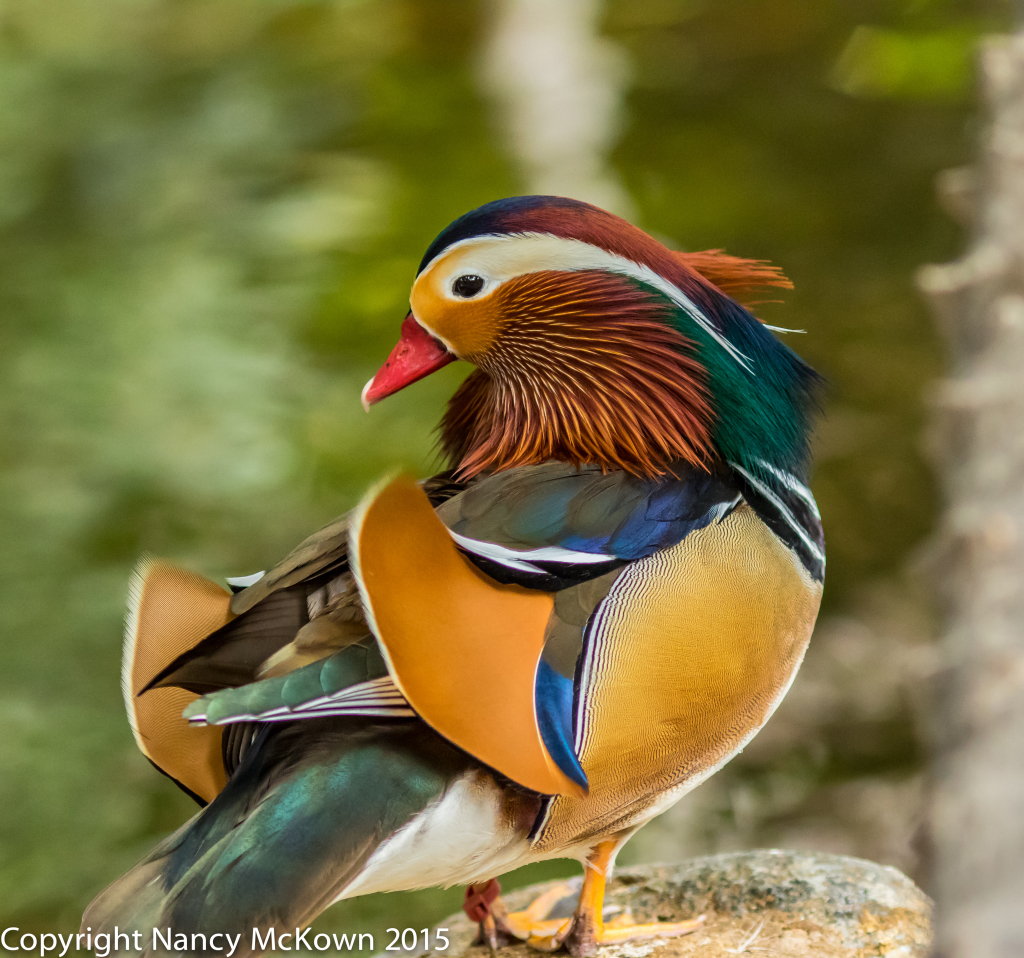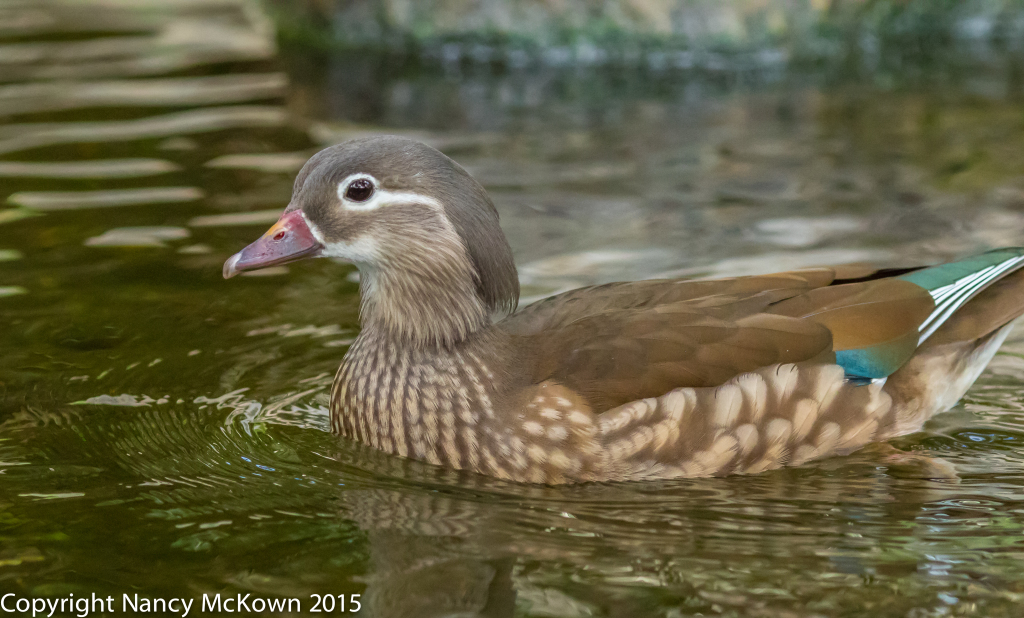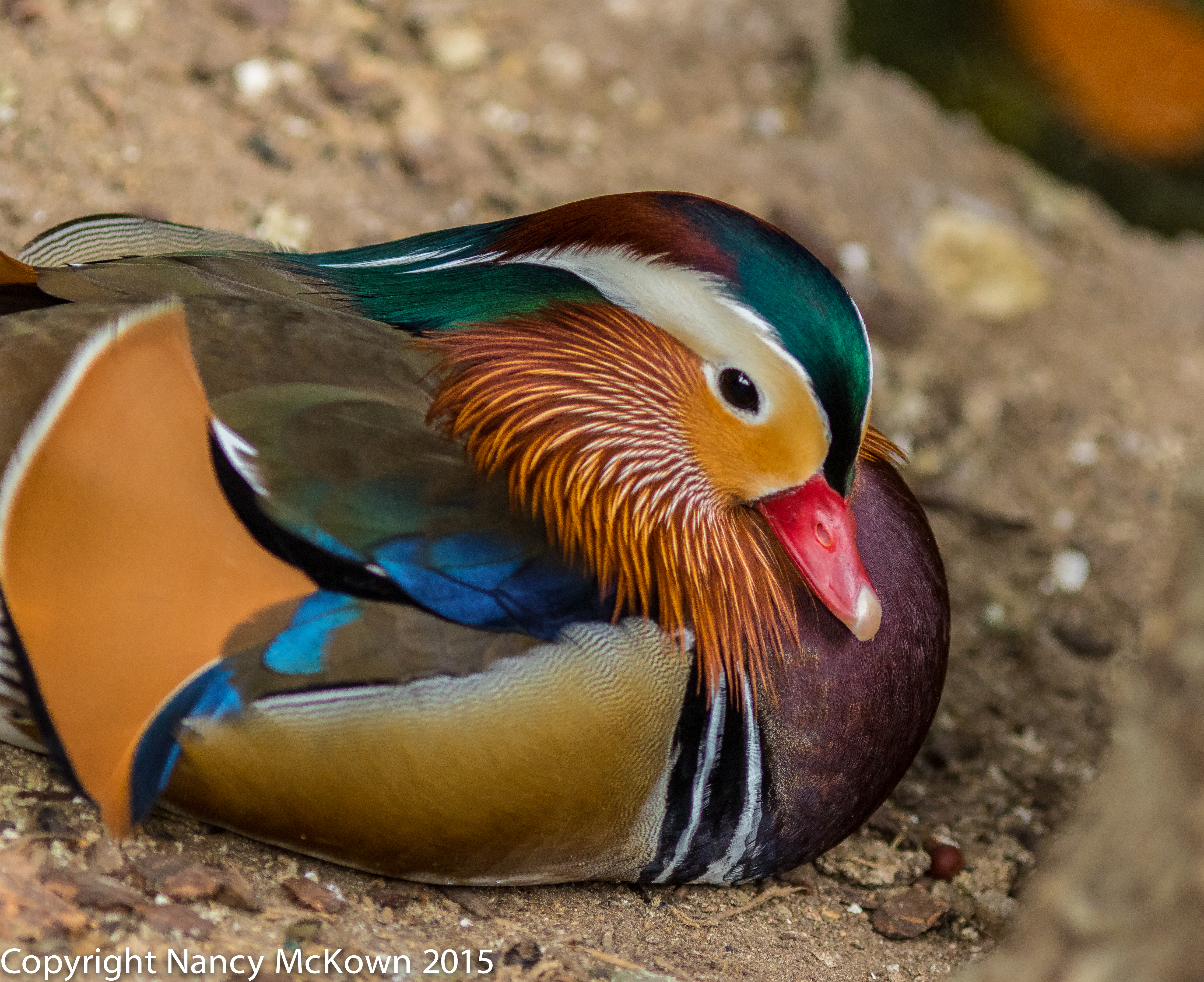Nature’s Fabulous Design
What a knockout! The Mandarin drake’s plumage is an unrestrained assortment of different patterns, colors, arrangements, textures, shapes, and lengths. Showing off a preponderance of gold, he also sports blue, green, and copper on his crest; white, orange, and olive in his mane, white, gold and black on his underparts, a bright purple breast, yellow feet and legs and a white tipped red bill. Large, dark eyes are emphasized with sleek white feathers that extend past his mane. Lustrous, iridescent blue colors shimmer on his back. Best of all, orange and gold sail feathers protrude 2″ or so up from his back. The Mandarin is definitely the most beautiful duck I’ve ever seen.

ISO3200; f/4; 1/800 Seconds
Photographing Captive Mandarin Ducks
Mandarin Ducks are native to east Asia and symbolize happiness and faithfulness. Mandarin pairs are often presented as wedding gifts in Japan and China. Brought to Europe and America as captives, many escaped into the wild and thrived. I photographed these individuals in the extensive, lush garden area of the Catamaran hotel on Mission Bay, San Diego, California. The Mandarins and three or four other species of ducks were provided with an abundance of food and water in an extensive aquatic environment set up by the hotel.
To photograph these exotic waterfowl, I walked to the Catamaran Hotel with my 7D Mark II, 135 mm lens with 2x extender. Focal length on this setup was 135 x 2 = 270. The cropped sensor gave an additional reach: 1.6 x 270 = 432 mm. A good focal length in a fairly compact camera setup made it easy to walk long distances. I did not bring my tripod.
Mature palm trees blocked a lot of the light coming into the gardens. After I manually set the exposure, the ISO was reading very high; 3200. The Mandarin Ducks at the hotel seemed accustomed to humans, but did not seek them out. I sat down on a sidewalk near the stream with my camera and waited. After 10 minutes or so, a pair of Mandarins swam by, the drake stopping to climb a rock and preen. Very easy shots and close enough to help counteract the high ISO.

Shedding His Beauty
The extraordinary adornment on the Mandarin drake indicates health and vitality and thus good breeding potential to a female Mandarin Duck. After the male flashes his extraordinary plumage for the females, completes the mating ritual and helps incubate the eggs, he leaves the family to commence extreme molting behavior. His work done, he transforms from spectacular to drab- perfect for blending and evading predators. The molting is so extreme on this species of duck that he temporarily looses his primary feathers and is unable to fly.
Read more about the defrocked Mandarin Duck in the March 2015 edition of National Geographic by pressing this link . Click to page 28. The one page article is entitled “Looking Hot, Then Not“.










Question and a comment. Okay, two comments. I am glad I decided I wanted to check with you on whether you are okay with me using your photo (the mandarin duck) on my desktop rotation of lovely images. So, that is also the question: are you okay, though now I must say it would go for a whole lot of images (I mean, snowy owls? they are the greatest. they always looks so amused).
And the original comment, “that mandarin duck is elegance itself, you are an amazing photographer”, with the addition of “wow! The photos!”
Hi Mike. Thankyou for your comment. I appreciate your kind words. And yes, please use my photo(s) on your desktop rotation.